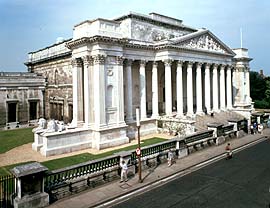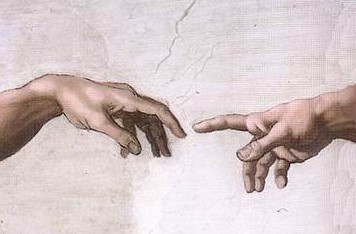
This Annunciation is extremely special for me personally - it was the piece that I analyzed for my final paper during my stay at Pembroke College (University of Cambridge). This work is currently housed at the Fitzwilliam Museum in Cambridge. My first arrival at Cambridge was on a rainy afternoon. I got off the coach (bus) and unknowingly walked right passed the Pembroke College entrance where I was supposed to check in. I didn't know I was lost until I spotted the Fitzwilliam Museum. That summer, I've gotten to know the city better and visited Fitzwilliam as a class with the professor, Dr. Oldfield, and also on my own. It is literally a five-minute walk from my dorm room!
This piece was one of five panels for a main altarpiece of Santa Lucia dei Magnoli in Florence. The balanced/symmetric structure is evident - both horizontally from column to column, and vertically from the entablature above to the floor below. The liberal use of a the neutral/pastel peach is also consistent with the other panel pieces. The perspective skills applied to the piece is amazing. In person, I saw actual cut marks that are still visible on the painting as if the artist made mathematic measurements for perspective purposes.
Mary's crossed arms and bowing gesture suggests that she is in the submission (Humiliatio) condition, accepting the message from Angel Gabriel. The garden's closed door symbolizes Mary's virginity. It also creates a boundary and protection between her and the outside world. This piece is so peaceful, don't you feel that that we, as viewers, are interrupting their intimate moment?
Pembroke College, founded in 1347, is the third oldest college in Cambridge. To put it in perspective, UC Irvine was founded in 1965 - more than 600 years later.

Fitzwilliam Museum (founded in 1816).























/images/festival-wired.jpg)